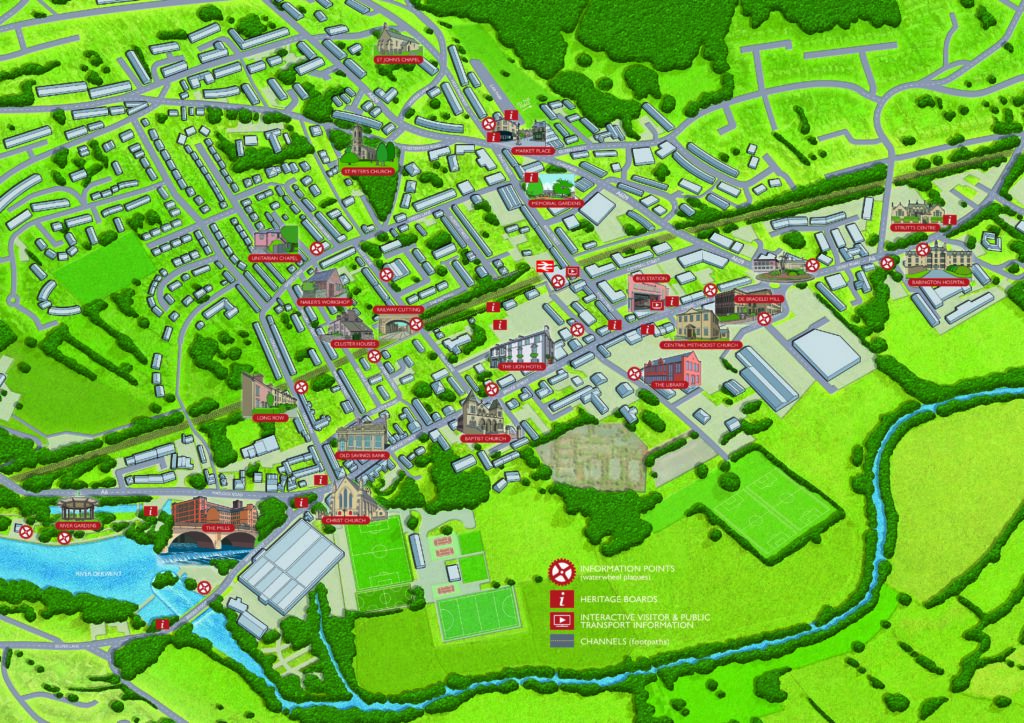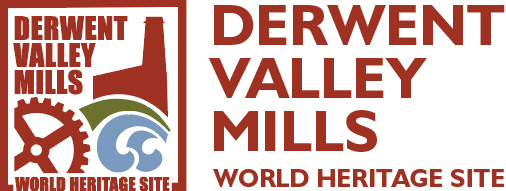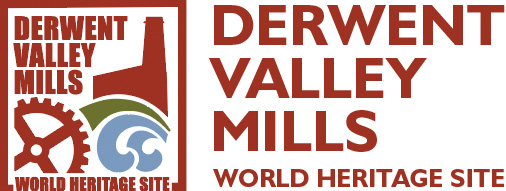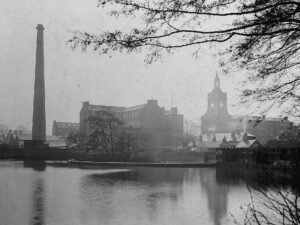Belper

Welcome to Belper
Interpretation Trail
Belper is an important element of the Derwent Valley Mills World Heritage Site. There are interpretation panels in the town centre to help you find out more about the key historic areas. There are also a series of waterwheel-shaped plaques to look out for, with details on how to find out more information about specific people and places. This map will help you to find the boards and plaques.
To download a copy of the map, click here.
Belper and Milford – industrial communities set in a beautiful landscape
This is an area of friendly and welcoming communities, home to people with a strong sense of place and a deep pride in their heritage. With a tradition of entrepreneurs, creatives and independent traders, these are vibrant towns and villages which celebrate their history and community spirit through festivals of arts, music and food.
Here, the Strutt family created new industrial communities in a pastoral landscape, much of which still remains. The legacy of these pioneers is everywhere to be seen – in stone-built mills, weirs, workers’ cottages, allotments and public buildings – their revolutionary ideas reaching out across the globe.
Today, the community’s connection with landscape is strong. This place of wide valley views, rolling hills and a river which constantly shifts its mood – from powerful to serene – provides havens for wildlife and a sense of awe for the many who visit.
Belper has been a settlement for at least a thousand years. In medieval times the Normans called it Beaurepaire, a Beautiful Retreat. Then it was part of the Duffield Frith, or Forest, and the Park, formerly Belper’s deer park, can still be seen today. Belper’s early industry was agriculture, framework knitting and nail-making.
After Jedidiah Strutt built his first water-powered cotton-spinning mill here in 1776, Belper became a thriving industrial centre for over 200 years as more industry arrived.
Jedidiah was one of the industrial pioneers who changed the lives of people across the world. He had financed and been business partner to Richard Arkwright when the first successful water-powered cotton spinning mill was built at Cromford in 1771. With the harnessing of waterpower on a previously unheard-of scale, the modern factory system was born here in the Derwent Valley. Before then people made thread by hand but once the mills and factories were built, they housed machines which were fast and efficient and could run continually, making thread more plentiful and cheaper. The production of cheaper cloth enabled everyone, not just the wealthy, to buy more cloth and our modern fashion industry was founded.
Jedidiah needed the waterpower of the River Derwent for the mills he was going to build and Belper provided the ideal conditions for harnessing the power of the river. Belper grew rapidly as people came here looking for work and Strutt provided attractive housing and many other benefits for his workers to encourage them to stay.
The oldest surviving mill in the town is the North Mill, built by Jedidiah’s eldest son William after the original was lost in a fire in 1803. His pioneering engineering work saw the development of iron-framed, fireproofed buildings – the forerunner of the modern-day skyscraper. By the mill is the impressive Georgian horseshoe weir built to create a head of water to power the mill complex.
The following generations of the Strutt family continued to provide housing and other facilities for the town such as the River Gardens and Memorial Gardens, and public buildings, including schools.
Belper is now part of the Derwent Valley Mills World Heritage Site and Belper has become a place of interest to visit with tranquil walks, fascinating history and interesting architecture.


